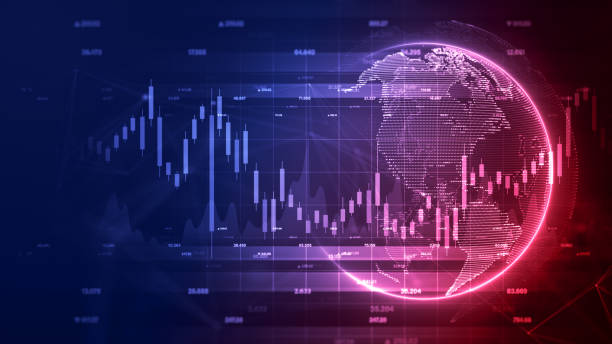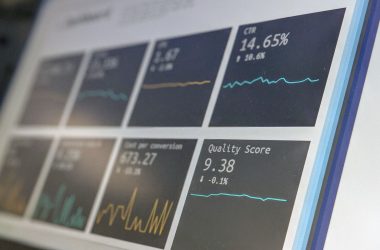Last Updated on: 27th June 2024, 11:11 am
Day traders experience green and red days, but when enough red days stack up, they may begin to doubt their abilities. While it’s smart to continuously assess a trading strategy, Ross Cameron, the founder of Warrior Trading, says a down period might have more to do with the market than the trader. The key is to know the difference between a hot and cold market and trade accordingly.
A cold market means that while some stocks make a move, generally the price action is not as volatile as it is in a hot market. In hot markets, traders see stocks move up quickly by 50% to 100% and more. Ross Cameron said in a recent video on the Warrior Trading YouTube channel that the difference is “night and day.” He says traders must learn to adjust to the market’s ebbs and flows.
“There are a number of changes I make in order to minimize my drawdown when it’s cold and maximize my upside when it’s hot,” said[1] Ross Cameron. “What I can tell you is that your ability to assess the current state of the market between the spectrum of hot and cold will be critical to your long-term ability to really maximize profits and minimize risk.”
He later added[2] , “You’ve got to trade the market you’re in, not the market you want to be in.”
Is Day-Trading Now Harder? Ross Cameron Doesn’t Think So
In the video, Ross Cameron said a veteran trader recently asked him if it’s harder to trade the market now than in the past. “I don’t feel like it’s getting harder,” said[3] Ross Cameron. “Overall, in total, I would say that it’s getting easier because I have more experience.”
He’s committed to sharing that experience. In addition to the Warrior Pro training programs offered on the Warrior Trading website, he also frequently posts to the Warrior Trading YouTube channel (where he has more than 1 million followers). He’s also a bestselling author; his latest book is How To Day Trade: The Plain Truth.
Ross Cameron tends to break his trading career down into major eras. There were the early days, then the small account challenge he started in 2017, then the pandemic period (a very hot market) and the postpandemic period. He said in this latest era, including much of 2024, trading is more difficult than in the pandemic years, but his green days are better than they were in the prepandemic days. He attributes that change to learning and refining how he approaches trading.
Ross Cameron walked listeners through some of these eras in the video. For example, his now-famous small-amount challenge went through hot and cold markets. In 2017, with the market hot, he took $583 and turned it into $335,000 by the end of the year. In 2018, with bitcoin in the middle of its big move, he made more than half a million dollars. In 2019, bitcoin and cryptocurrency crashed.
“We were sort of on the dark side of the moon. It was getting a little cold
out there and I think everyone was a little nervous and I made, I think, around $360,000 — it was a little bit of a slower year,” Ross Cameron said[4] .
The next year provided a lesson in dealing with unpredictability. With the pandemic spreading around the world, the stock market tumbled by March 2020. But then, Ross Cameron ended up having his best trading month ever in April 2020 and made $1 million in May 2020 alone.
“I think the cause of it was the stimulus [checks], all the money that was pumped into the economy,” he said[5] . “So, I was able to recognize pretty quickly that the market was hot.”
How Ross Cameron Shifts Strategies in Hot and Cold Markets
During a hot market, Ross Cameron said he increases his share size to maximize profits. He also takes positions faster as he sees buying opportunities form, which usually occurs when the stock price rises more than 10% on large volume. He also said he tends to trade later during a hot market. In the hottest markets, he might sit down before 4 a.m. to trade the premarket and keep trading all the way until 8 p.m.
How can traders know a hot market is shifting to cold? Ross Cameron said the biggest clue is often in the trader’s own profit and loss statement. As markets cool, he said day traders begin to have “close calls.” For example, he said a trader will buy a stock that suddenly moves in the wrong direction, but then manages to come back up to the break-even point. “You’re like, “Whoa, that was close, because with a big share size I almost just got totally smoked,” he said[6] .
He stated that traders should pay attention to these warning signs. “I know from my own experience that when we’re in a cold market, sometimes I’ll ask myself if I even know what the heck I’m doing,” Ross Cameron said[7] . He said that’s because a stock’s price action “doesn’t resolve the way it normally would.”
He added[8] , “What’s happened is that sentiment has shifted. Traders are feeling a little more cautious. The buyers are sitting back and the bears, they smell that weakness — sharks, they smell the blood in the water, they start to get a little more aggressive to the short side.”
When he recognizes the market is cold, he shifts into what he calls “trader rehab.” He recently did an entire video on trader rehab, detailing how he reduces share size and focuses on making a gain, no matter how small.
He said in both hot and cold markets, traders must focus on discipline and patience.
“I have come to recognize that maybe 90% of trading is sitting and waiting and being patient, and the remaining 10% is actually being in a trade,” Ross Cameron said[9] . “It may even be skewed more toward waiting. So, your ability to be patient is very important.”
It’s important to note Ross Cameron’s experience is not typical. Becoming an experienced trader takes hard work, dedication, and a significant amount of time. Your results may differ materially due to a number of factors. Available research data suggests that most day traders are not profitable.
Disclaimer
The content of this article is for informational and educational purposes only and should not be construed as financial advice or as a guarantee of success in day trading or any other form of investment. Day-trading involves substantial risks, including the potential for significant losses. Results can vary greatly, and past performance is not indicative of future outcomes. Readers are encouraged to conduct their own research and to consult with a qualified financial professional before making any investment or day trading decisions.
Disclosure: This is sponsored content. The sponsorship may include, but is not limited to, payment for article placement to the publication, compensation to the writer for their time, or other arrangements.






